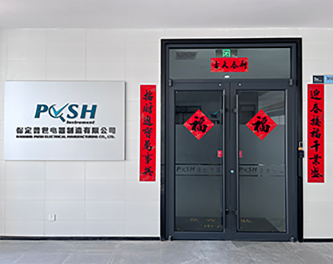 English
English


Oil Flash Point Testing Equipment for Accurate Measurement and Safety Assessment
Understanding the Importance of Oil Flash Point Testers
In the realm of industrial operations, the ability to assess the safety and performance of various lubricants and fuels is paramount. One of the critical metrics to evaluate these substances is the flash point, which is defined as the lowest temperature at which the vapor of a substance can ignite in air. Oil flash point testers are essential instruments in this area, providing vital information for manufacturers, regulatory bodies, and safety professionals.
The Significance of Flash Point
The flash point of oil and other hydrocarbons is a crucial indicator of their volatility. Lower flash points indicate that a substance can ignite more easily, posing significant risks during storage, transportation, and use. For instance, in industries such as aviation, automotive, and marine, knowing the flash point of fuels is essential for ensuring safe handling and compliance with safety regulations.
Determining the flash point also helps in quality control. Different grades and types of oil serve specific functions, and knowing their flash points can ascertain their suitability for various applications. For example, lubricants used in high-performance engines often require oils with specific flash points to ensure optimal lubrication and prevention of ignition under extreme conditions.
How Oil Flash Point Testers Work
Oil flash point testers come in various designs and use different methodologies to measure the flash point of oils and similar substances. The most common types include the closed cup and open cup methods.
1. Closed Cup Tester This method involves placing a small sample of oil in a sealed container, which is heated at a controlled rate. A small ignition source is introduced at intervals. The temperature at which a flash is observed is recorded as the flash point. Closed cup testers are favored for their sensitivity and are generally used to assess more volatile materials.
oil flash point tester

2. Open Cup Tester In this procedure, the oil is placed in an open dish, and the heating continues while an ignition source is periodically passed over the surface. The open cup method is less sensitive than the closed cup method but is useful for testing heavier oils and fuels.
Both methods adhere to international standards, such as ASTM D92 for open cup and ASTM D7094 for closed cup tests, ensuring consistency and reliability in results.
Applications and Industries
Oil flash point testers are widely employed across a variety of industries. In the petrochemical sector, these testers help in assessing the flash points of crude oil and its derivatives. In manufacturing, they are instrumental in quality control processes for lubricants and hydraulic fluids. Additionally, in the automotive industry, materials with appropriate flash points are selected to enhance engine performance and compliance with environmental regulations.
Furthermore, flash point testing is crucial for regulatory compliance. Agencies such as the Environmental Protection Agency (EPA) in the United States require detailed knowledge of the flash points of various fuels and oils, especially those that may pose environmental hazards. Common use of flash point testers ensures that companies meet safety standards and protect both workers and the environment.
Conclusion
In conclusion, oil flash point testers are indispensable tools in ensuring the safety, quality, and performance of oils and fuels. Their ability to accurately determine the flash point not only aids manufacturers in compliance with regulations but also fosters a safer working environment. The various testing methods available cater to different industrial needs, allowing for versatile applications in diverse sectors. As the industry continually advances, the importance of oil flash point testers will undoubtedly keep growing, further underpinning their essential role in safety and quality assurance. Understanding flash points and the tools used to measure them is vital for anyone involved in the handling of combustible materials, marking a key step towards enhanced safety standards in the industry.
-
Differences between open cup flash point tester and closed cup flash point testerNewsOct.31,2024
-
The Reliable Load Tap ChangerNewsOct.23,2024
-
The Essential Guide to Hipot TestersNewsOct.23,2024
-
The Digital Insulation TesterNewsOct.23,2024
-
The Best Earth Loop Impedance Tester for SaleNewsOct.23,2024
-
Tan Delta Tester--The Essential Tool for Electrical Insulation TestingNewsOct.23,2024





